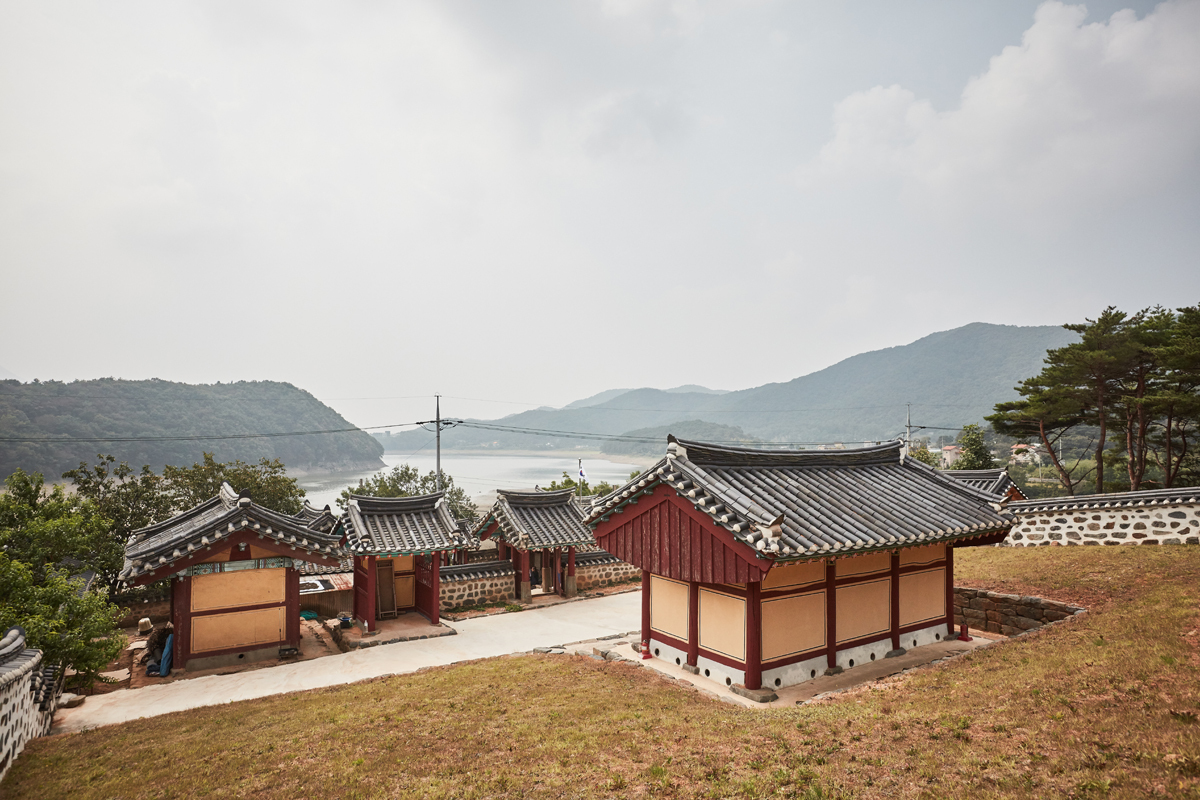 |
Portrait of Tojeong Lee Ji-ham |
In the “Annals of the Joseon Dynasty,” it is recorded that when Lee Ji-ham (1517-1578), who served as Asan County chief at the age of 62, died three months after his inauguration, local residents poured out into the streets, shedding tears in mourning. Why were the people so stricken by his death? Lee, who excelled in science, math, medicine, astronomy and geography, also studied the art of fengshui under the noted scholar Hwaam Seo Gyeong-deok.
Lee was born into the prestigious family of the Hansan Lee clan, but his life was not a smooth one. Due to the guilt-by-association system -- his wife’s family was accused of treason -- that barred him from holding government positions, he wandered around the country for more than 20 years until he was reinstated.
Ironically, this roller-coaster life taught him valuable life lessons and allowed him to passionately care for lower-class people struggling with poverty.
Many anecdotes show the warmth of the “reformer who ran into the world” rather than the eccentricity of an upper-class scholar who made it through rough times.
Lee shared with the poor the keys to success in commerce, salt and fisheries that he gained through his own experience in those fields. It was not normal that a senior governor from the upper class would roll up his sleeves to engage in such works to make a living, no matter how rocky the times.
Moreover, Lee built Geolincheong, a modern rehabilitation institution, where beggars were given one-on-one counseling to find the work best suited to them so that they could make a living on their own.
 |
A view of Hwaam Seowon in Boryeong, South Chungcheong Province (Chungnam Institute of History and Culture) |
Recognizing the differences in natural abilities, he emphasized the importance of placing people in the right position, from beggars to bureaucrats, in his appeal as follows:
“If a hawk catches a pheasant, a chicken announces dawn, a horse pulls a cart, and a cat catches a mouse, all four animals show useful tricks. If hawks were to announce the dawn, they would not be as good as chickens, and if horses were to catch mice, they would not be as good as cats, and if the chickens hunted and the cats pulled carts, all these animals would be discarded.”
This is worth considering today as the parliamentary hearings are underway to confirm new Cabinet appointments.
Lee Ji-ham was often called by his nom de plume, “Tojeong,” or a dirt-walled hut, having lived most of his life in a hut built against a dirt wall in today’s Mapo district in Seoul. He was a reformer who tried to understand people’s individual differences and acted rationally to solve the structural ills of inequality and instability in society. The public’s grief over Lee’s death was a token of their gratitude for his empathy.
Lee was one of the few governors who understood and improved the lives of all his subjects.
Unfortunately, Lee was not well-known as a social reformer. He was better known as the author of the prophecy book, “Tojeongbigyeol (Secret Divinatory Art of),” which was easier to read than “Classic of Changes” in Chinese. Also, it was said to be “a prophecy book of hope for those who have no hope” at that time.
But, now might be the time to set him free from the title of “Tojeongbigyeol” that is often attached to his name. While walking through the Hwaam Seowon in Boryeong, South Chungcheong Province, a cultural venue built in 1610 where his tablet is enshrined, we may have a chance to remember him as a reformer that “understands differences.“
By Park Jeong-eon (ks101301@hanmail.net)
Park Jeong-eon is a senior researcher at Chungnam Institute of History and Culture. – Ed.By Korea Herald (
khnews@heraldcorp.com)








![[Today’s K-pop] Blackpink’s Jennie, Lisa invited to Coachella as solo acts](http://res.heraldm.com/phpwas/restmb_idxmake.php?idx=644&simg=/content/image/2024/11/21/20241121050099_0.jpg)
